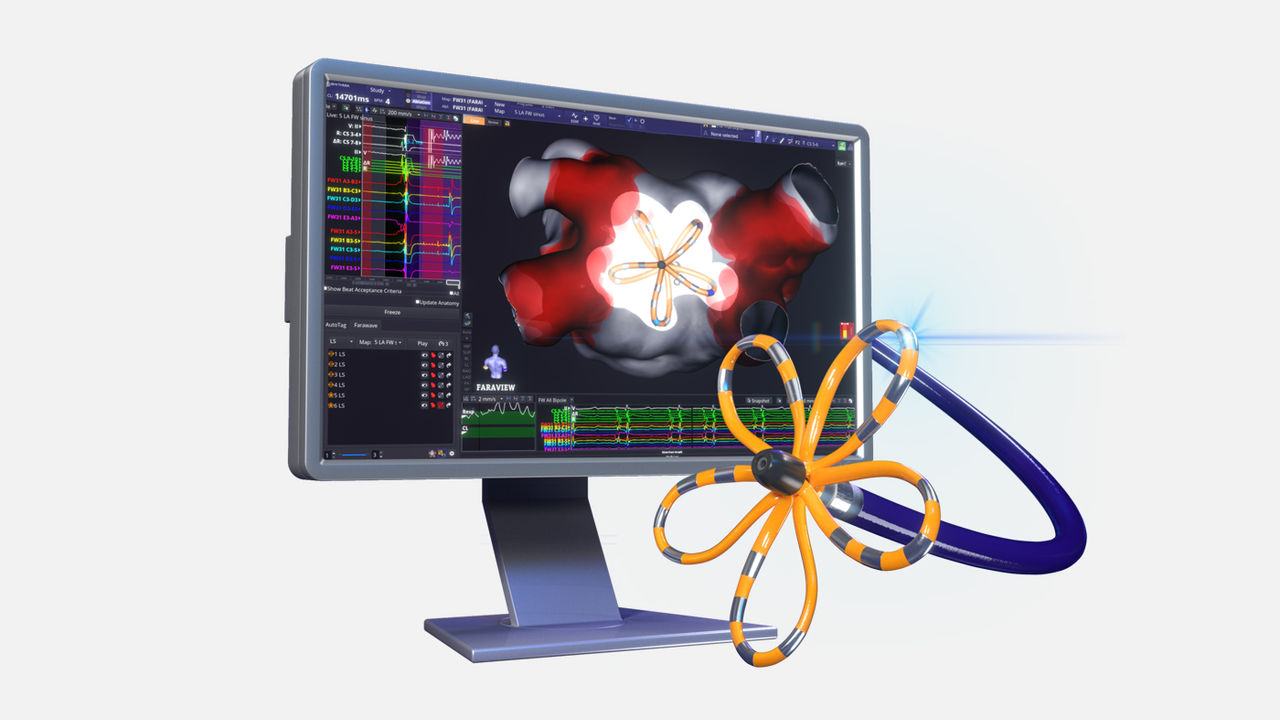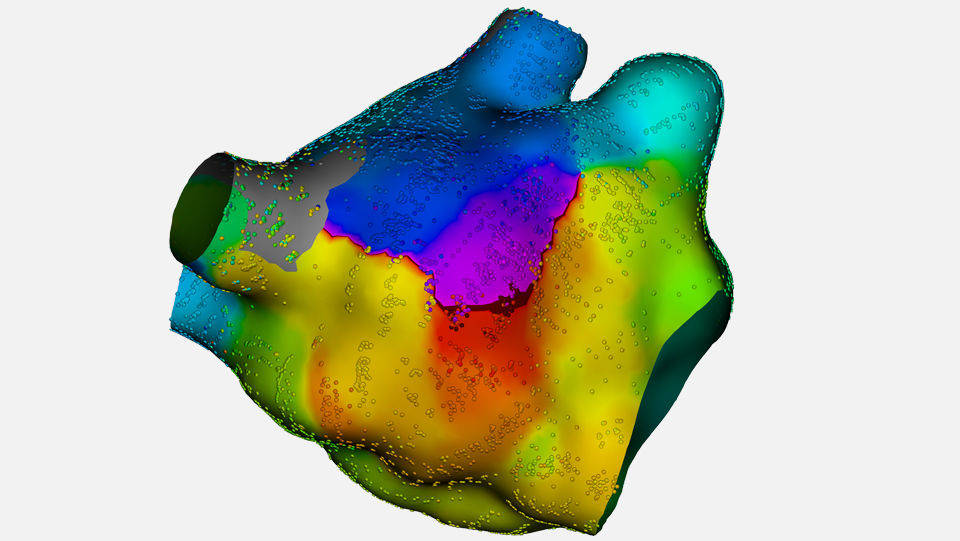OPAL HDx provides integrated mapping for both RF and pulsed field ablation procedures while giving enhanced access to the transformational capabilities of the FARAPULSE™ Pulsed Field Ablation System. Offering a complete range of mapping solutions, OPAL HDx allows you to choose the treatment modality that best meets your case needs.
Boston Scientific welcomes our RHYTHMIA HDx™ customers to the OPAL HDx Mapping System, a full-spectrum mapping experience at the leading edge of PFA.
Full-spectrum cardiac mapping
The OPAL HDx system also provides ultra-HD cardiac mapping in support of conventional ablation procedures and integration with our portfolio of RF catheters.

Integrated cardiac mapping for FARAPULSE™ PFA workflows

Conventional mapping
FARAVIEW™ Software Module

The mapping solution for the FARAPULSE Pulsed Field Ablation System

Single-catheter solution
Conventional HD mapping and RF capabilities

Precise localization of even the most complex arrhythmias

Rapid identification of areas of clinical interest

Enhanced RF ablation delivery with advanced contact force catheters
Review the full portfolio of compatible ablation catheters.
RHYTHMIA HDx™ has evolved to the OPAL HDx™ Mapping System, the full-spectrum cardiac mapping system at the leading edge of PFA.


















